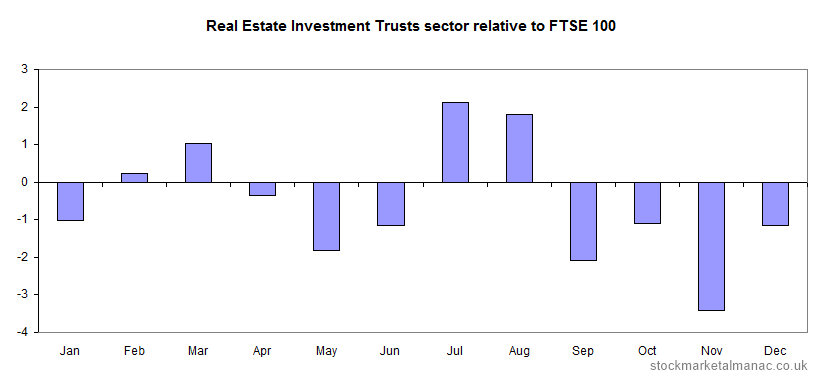How To Analyze Real Estate Investment Trusts_1
Post on: 30 Май, 2015 No Comment

A real estate investment trust (REIT) is a real estate company that offers common shares to the public. In this way, an REIT stock is similar to any other stock that represents ownership in an operating business. But an REIT has two unique features: its primary business is managing groups of income-producing properties and it must distribute most of its profits as dividends. Here we take a look at REITs, their characteristics and how they are analyzed.
The REIT Status
To qualify as an REIT with the IRS, a real estate company must agree to pay out at least 90% of its taxable profit in dividends (and fulfill additional but less important requirements). By having REIT status, a company avoids corporate income tax. A regular corporation makes a profit and pays taxes on its entire profit, and then decides how to allocate its after-tax profits between dividends and reinvestment; an REIT simply distributes all or almost all of its profits and gets to skip the taxation.
Types of REITs
Fewer than 10% of REITs fall into a special class called mortgage REITs. These REITs make loans secured by real estate, but they do not generally own or operate real estate. Mortgage REITs require special analysis. They are finance companies that use several hedging instruments to manage their interest rate exposure. We will not consider them here.
While a handful of hybrid REITs run both real estate operations and transact in mortgage loans, most REITs focus on the hard asset business of real estate operations. These are called equity REITs. When you read about REITs, you are usually reading about equity REITs. Equity REITs tend to specialize in owning certain building types such as apartments, regional malls, office buildings or lodging facilities. Some are diversified and some are specialized, meaning they defy classification — such as, for example, an REIT that owns golf courses. (For more insight, see 5 Types Of REITs and How To Invest In Them.)
Analyzing REITs
REITs are dividend-paying stocks that focus on real estate. If you seek income, you would consider them along with high-yield bond funds and dividend paying stocks. As dividend-paying stocks, REITs are analyzed much like other stocks. But there are some large differences due to the accounting treatment of property.
Let’s illustrate with a simplified example. Suppose that an REIT buys a building for $1 million. Accounting requires that our REIT charge depreciation against the asset. Let’s assume that we spread the depreciation over 20 years in a straight line. Each year we will deduct $50,000 in depreciation expense ($50,000 per year x 20 years = $1 million).
Let’s look at the simplified balance sheet and income statement above. In year 10, our balance sheet carries the value of the building at $500,000 (a.k.a. the book value): the original historical cost of $1 million minus $500,000 accumulated depreciation (10 years x $50,000 per year). Our income statement deducts $190,000 of expenses from $200,000 in revenues, but $50,000 of the expense is a depreciation charge.
However, our REIT doesn’t actually spend this money in year 10; depreciation is a non-cash charge. Therefore, we add back the depreciation charge to net income in order to produce funds from operations (FFO). The idea is that depreciation unfairly reduces our net income because our building probably didn’t lose half its value over the last 10 years. FFO fixes this presumed distortion by excluding the depreciation charge. (FFO includes a few other adjustments, too.)
We should note that FFO gets closer to cash flow than net income, but it does not capture cash flow. Mainly, notice in the example above that we never counted the $1 million spent to acquire the building (the capital expenditure). A more accurate analysis would incorporate capital expenditures. Counting capital expenditures gives a figure known as adjusted FFO, but there is no universal consensus regarding its calculation.
Our hypothetical balance sheet can help us understand the other common REIT metric, net asset value (NAV). In year 10, the book value of our building was only $500,000 because half of the original cost was depreciated. So, book value and related ratios like price-to-book — often dubious in regard to general equities analysis — are pretty much useless for REITs. NAV attempts to replace book value of property with a better estimate of market value.
Calculating NAV requires a somewhat subjective appraisal of the REIT’s holdings. In the above example, we see the building generates $100,000 in operating income ($200,000 in revenues minus $100,000 in operating expenses). One method would be to capitalize the operating income based on a market rate. If we think the market’s present cap rate for this type of building is 8%, then our estimate of the building’s value becomes $1.25 million ($100,000 in operating income / 8% cap rate = $1,250,000). This market value estimate replaces the book value of the building. We then would deduct the mortgage debt (not shown) to get net asset value. Assets minus debt equals equity, where the ‘net’ in NAV means net of debt. The final step is to divide NAV into common shares to get NAV per share, which is an estimate of intrinsic value. In theory, the quoted share price should not stray too far from the NAV per share.

Top Down Vs. Bottom Up
When picking stocks, you sometimes hear of top-down versus bottom-up analysis. Top-down starts with an economic perspective and bets on themes or sectors (for example, an aging demographic may favor drug companies). Bottom-up focuses on the fundamentals of specific companies. REIT stocks clearly require both top-down and bottom-up analysis.
From a top-down perspective, REITs can be affected by anything that impacts the supply of and demand for property. Population and job growth tend to be favorable for all REIT types. Interest rates are, in brief, a mixed bag. A rise in interest rates usually signifies an improving economy, which is good for REITs as people are spending and businesses are renting more space. Rising interest rates tend to be good for apartment REITs as people prefer to remain renters rather than purchase new homes. On the other hand, REITs can often take advantage of lower interest rates by reducing their interest expenses and thereby increasing their profitability.
Capital market conditions are also important, namely the institutional demand for REIT equities. In the short run, this demand can overwhelm fundamentals. For example, REIT stocks did quite well in 2001 and the first half of 2002 despite lackluster fundamentals, because money was flowing into the entire asset class.
At the individual REIT level, you want to see strong prospects for growth in revenue, such as rental income, related service income and FFO. You want to see if the REIT has a unique strategy for improving occupancy and raising its rents. REITs typically seek growth through acquisitions, and further aim to realize economies of scale by assimilating inefficiently run properties. Economies of scale would be realized by a reduction in operating expenses as a percentage of revenue. But acquisitions are a double-edged sword. If an REIT cannot improve occupancy rates and/or raise rents, it may be forced into ill-considered acquisitions in order to fuel growth.
As mortgage debt plays a big role in equity value, it is worth looking at the balance sheet. Some recommend looking at leverage, such as the debt-to-equity ration. But in practice, it is difficult to tell when leverage has become excessive. It is more important to weigh the proportion of fixed versus floating-rate debt. In the current low interest rate environment, an REIT that uses only floating-rate debt will be hurt if interest rates rise.
The Bottom Line
REITs are real estate companies that must pay out high dividends in order to enjoy the tax benefits of REIT status. Stable income that can exceed Treasury yields combines with price volatility to offer a total return potential that rivals small capitalization stocks. Analyzing an REIT requires understanding the accounting distortions caused by depreciation and paying careful attention to macroeconomic influences.














